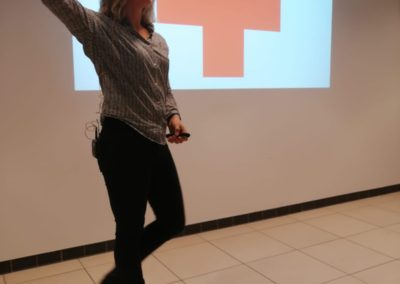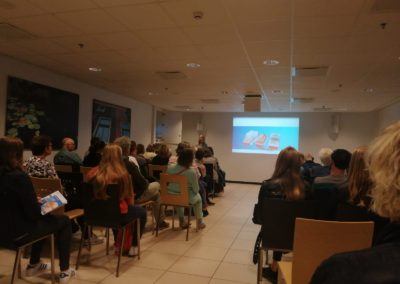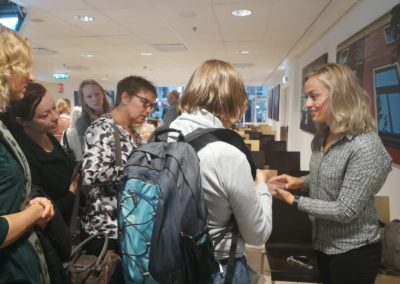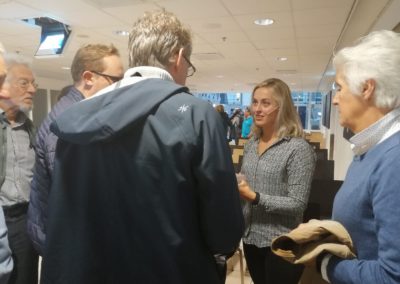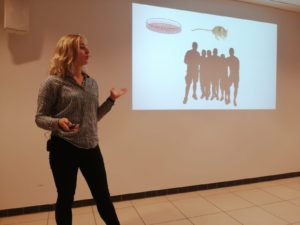 Why does medicine not work equally well for everyone? At the annual Science Open Day, on Sunday October 6th at Leiden University Medical Centre (LUMC), Laura Windt – PhD student in Prof. Dr. Christine Mummery’s lab – held a talk on a potential solution: Organ-on-Chip containing personalized stem cells. The differences in medicine efficacy and toxicity between individuals was discussed. She then explained how Organ-on-Chip research is step-by-step beginning to provide better insights in how individual patients respond to drugs. And what the implications might be in understanding why efficacy and toxicity of medicines varies between individuals and groups.
Why does medicine not work equally well for everyone? At the annual Science Open Day, on Sunday October 6th at Leiden University Medical Centre (LUMC), Laura Windt – PhD student in Prof. Dr. Christine Mummery’s lab – held a talk on a potential solution: Organ-on-Chip containing personalized stem cells. The differences in medicine efficacy and toxicity between individuals was discussed. She then explained how Organ-on-Chip research is step-by-step beginning to provide better insights in how individual patients respond to drugs. And what the implications might be in understanding why efficacy and toxicity of medicines varies between individuals and groups.
Examples of state-of-the-art technology were shown including how to grow cells from specific organs “on a microfluidic chip”. She showed how stem cells (called “induced pluripotent stem cells”) could be induced to form various types of cells of the body through “differentiation”. Examples of human induced pluripotent stem cell derived cardiomyocytes were shown. These cells can be cultured as a monolayer in a dish for conventional medicine testing but can also form three-dimensional tissues on a chip to better mimic the human body. This Heart-on-Chip model was shown on a chip recently fabricated by Milica Dostanic (PhD student at TU Delft) in a joint project with LUMC in the context of the NWO Gravitation consortium Netherlands Organ-on-Chip Initiative (NOCI) in which engineers and biotechnologists work together to form near-reality tissue models.
After the talk the public could see and touch chips fabricated by Mees de Graaf (PhD student at the LUMC). Everyone was enthusiastic about the idea and amazed by how small the chips were. They were particularly interested to feel how flexible the material used for the chips was and understood how this soft tissue could make the cells feel “at home” as if they were in the real heart or other organ.
The doors were open for all, so the public varied from young to old. And they all appeared to understand why and how Organ-on-Chip models better recapitulate the human body. Questions asked included when this technique would be ready for widespread use, how long the process would take from patient to (personalized) medical advice and the importance of coupling organs. And a very young but attentive child even asked what the yellow ball was in the animated blood stream of coupled organs, as shown in the NOCI video (time capture: 0:34): https://www.youtube.com/watch?v=zszT9SBC3TM.

